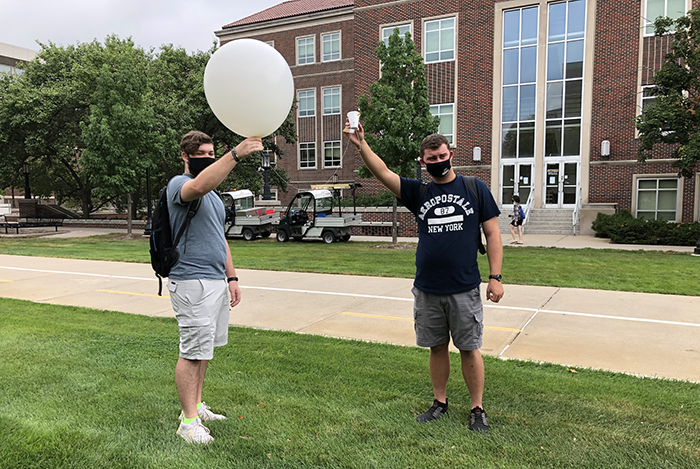EAPS professor makes unexpected changes in atmospheric class to maximize student experience during the pandemic
12-07-2020
Writer(s): Cheryl Pierce
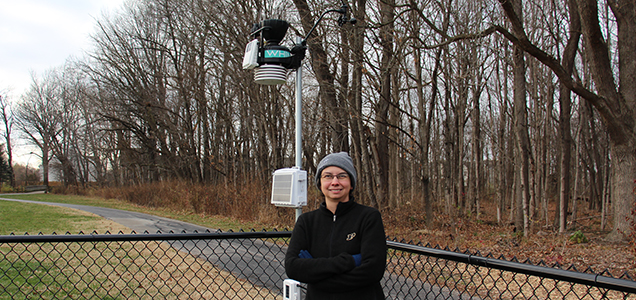
How do you teach a class that typically has hands on applications and field work when a pandemic threatens to shut class down at any point in the upcoming semester? That’s the question many professors faced when classes began in August 2020. Whether the class was offered in person or as a hybrid online/in-person class, the threat of shutdowns loomed due to the spread of COVID-19. Dr. Robin Tanamachi, Assistant Professor of Purdue Earth, Atmospheric, and Planetary Science (EAPS) struggled with how to create a class experience that would give her EAPS 22700 students the full exposure to meteorological instrumentation and came up with solutions that could work no matter the climate.
Tanamachi teaches atmospheric science and specializes in severe weather. EAPS 22700 is a hands-on class which covers principal techniques, tool, and instruments used in atmospheric science research. Students work on research alone and in groups to measure temperature, humidity, pressure, wind, and upper air.
Though there was no shutdown in the Fall 2020 semester, the threat of a shutdown was always looming. Throughout the term, students went in and out of quarantine at various times. Tanamachi reevaluated everything about how the class is currently structured and created a learning environment that maximized every in-person minute while also practicing safety precautions designed to protect Purdue students and faculty.
“The content of the class has not changed, but the delivery has,” explains Tanamachi. "In past versions of this course, the students attended in-person lectures and did lab exercises in groups. For their final projects, students deploy some of EAPS' meteorological instruments to test an assigned hypothesis. They have to come up with a coordinated deployment plan, execute it, and then analyze the data. During the pandemic, it became inadvisable for them to work in close proximity on the same instruments, or even ride in a car together to a deployment site. This forced me to consider other alternatives. Fortunately, I had just recently learned about the WHIN weather station network. I was able to have the students use that as an alternate data source, and thereby avoid the risks inherent in having to touch the same instruments.”
Students were able to use data from the 150 WHIN weather stations that are spread across several counties in the West Lafayette area. This allowed for an educational experience unimpeded by unsafe practices. The WHIN data are compiled in a portal on their website and are freely available for student use via an educational license. WHIN also has an existing partnership with Purdue through the Data Mine.
“The data, which students downloaded off the data portal, were used to test hypotheses related to the impact of urban station location on temperature and wind measurements," says Tanamachi. "I instructed each group to have at least one member visit each of their ten selected stations to verify that they were indeed in ‘urban’ and ‘rural’ settings, and to document any obstructions nearby (such as buildings and trees) that might influence the measurement quality. This type of information is called ‘metadata’ (data about the data), whose importance we discussed in class.”
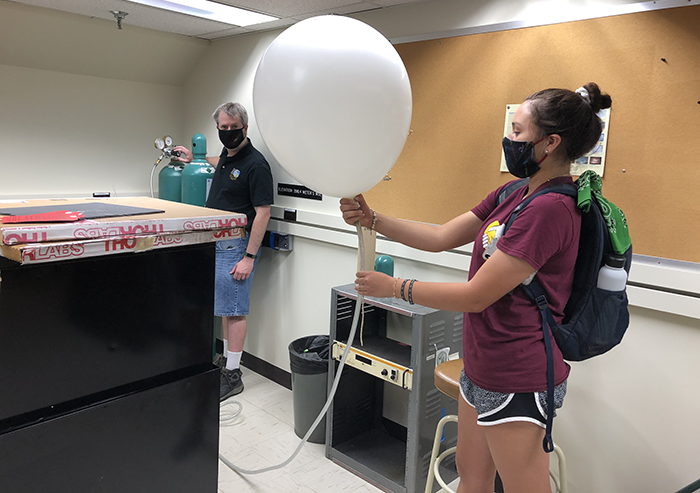
In addition to the WHIN stations, students were able to use a variety of instruments, including weather balloons, in EAPS 22700. EAPS Professor Dr. Dan Dawson and TA Collin Hamill were available the help students with using this equipment and adhering to safety protocols. Because classroom in-person success was dependent on the level of COVID-19 spread Greater Lafayette area, Tanamachi had to structure the class in a way that was very much different than before. She said she tried to get as many of the instruments into the hands of students as early as possible in the semester. Typically, these activities would have been distributed throughout the semester.
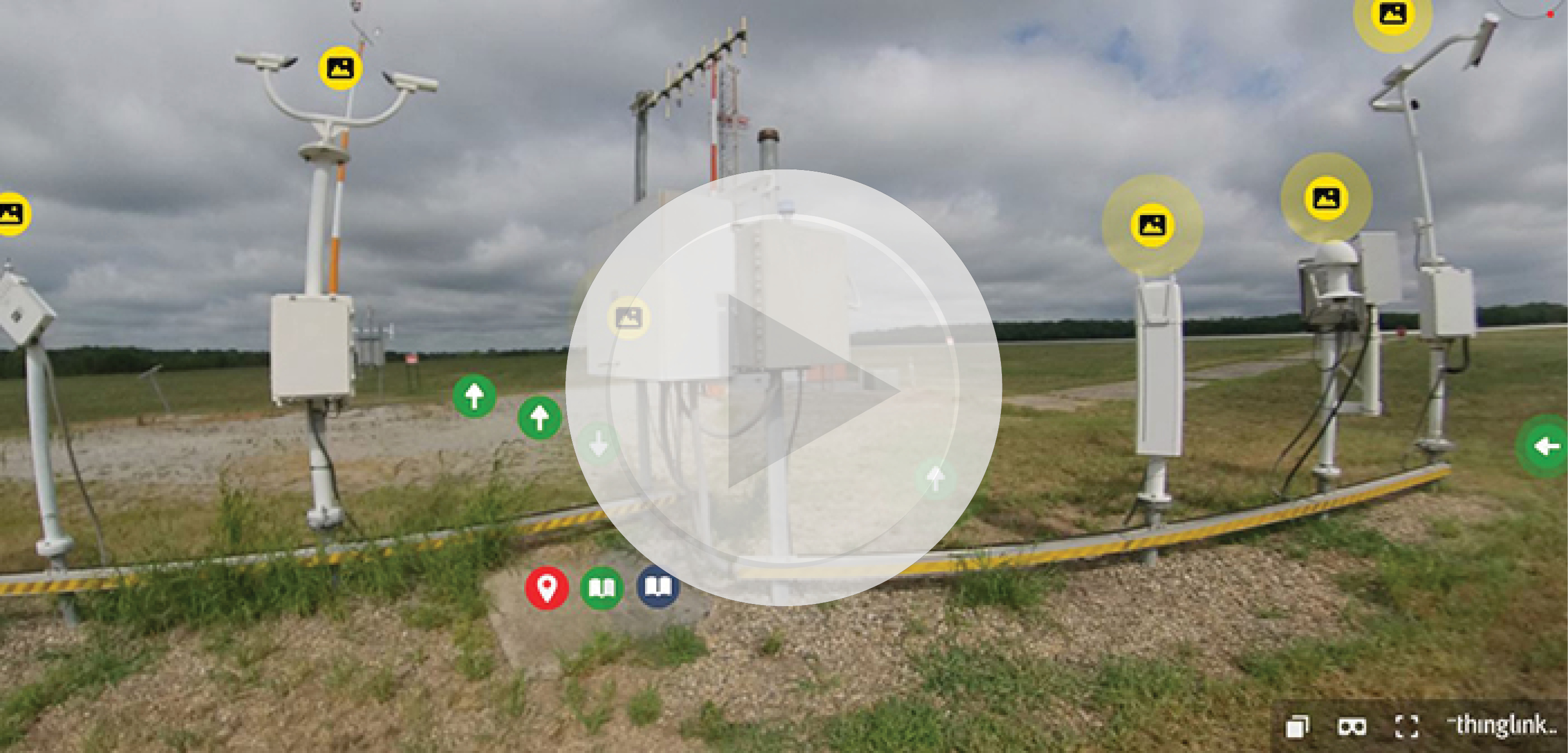
Dr. Tanamachi used several tactics to tackle this unprecedented semester. She created this 360 degree virtual tour video of the Automated Surface Observing System (ASOS) at Purdue Airport, because the class was unable to visit the site in person as in previous years.
Grace Kowalski, a sophomore studying atmospheric science, said the class was not like any other class she has taken at Purdue University and safety was considered with every action.
“Dr. Tanamachi was very good about telling us to wipe down our stations and keeping things hygienic when we were in person,” says Kowalski. “When there were instruments to use, like a Kestrel, or something to pass around (like a 3-D printed cup anemometer), she gave every student, the TA, and herself gloves. This allowed us all to still participate in a hands-on way while still practicing COVID safety. She also had a large tub of alcohol wipes in the front of the class and hand sanitizer (provided by Protect Purdue) that she would offer us. When the class switched to an online format toward the end of the semester, she held synchronous lectures through Webex the first few times. Then, she changed the format to something none of my other professors had done. She had asynchronous videos for us to watch during our scheduled class time, and then we would respond to question prompts from her real-time. This was really cool because it mixed synchronous and asynchronous elements. It also fostered a lot of participation because students that are usually too shy to answer questions out loud could just type them. Overall, she came up with many successful ways to make her class still enjoyable during this pandemic. I thoroughly enjoyed how ‘textbook learning’ and hands-on experience were combined. I think Dr. Tanamachi's class was the most successful in doing this out of any class I have taken so far at Purdue.”
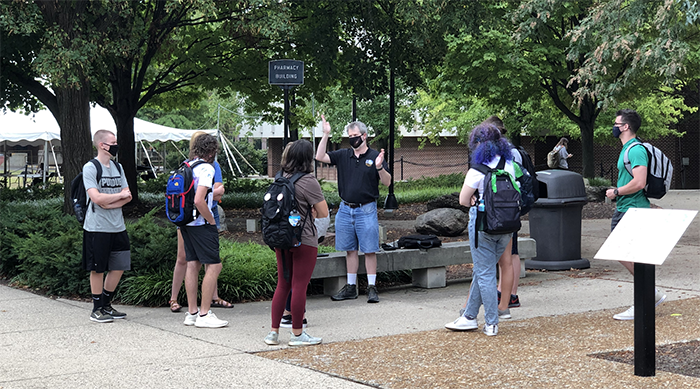
EAPS Professor Dan Dawson assists EAPS 22700. When weather permitted, the class met outdoors.
Once the pandemic threat is over, professors will have learned quite a few lessons about a sudden shift to online classes. What will they take from this and will they use some of the new techniques used in future classes even if they are unrestricted and in person? Tanamachi says there are definitely ideas that will cross over into the typical classroom setting.
“I would still like the students to have the experience of running their own miniature field campaign,” she says. “Past students have told me that dealing with the logistics and coordination involved in deploying their own instruments was a valuable experience. I believe these are important skills for them to have in their arsenals, particularly if they wish to pursue meteorology careers. That said, I found the WHIN data to be a highly valuable resource. The station network is many times denser than the ASOS network operated by the National Weather Service, and the fact that it is locally managed meant that the people running it were also local and accessible. I fully intend to continue integrating WHIN data into future versions of this course. I absolutely must thank WHIN for being so helpful when I reached out to them about integrating their data and weather stations into this class. In particular, I want to thank Johnny Lin, Jack Stucky, and Zach Mason for giving a guest lecture to the students about the WHIN weather stations, technical information about the stations, and for retrieving archived data for the students. They seemed genuinely excited to work with the students and to see their data being used in an educational setting. I look forward to continuing to work with them on this and other projects.”
